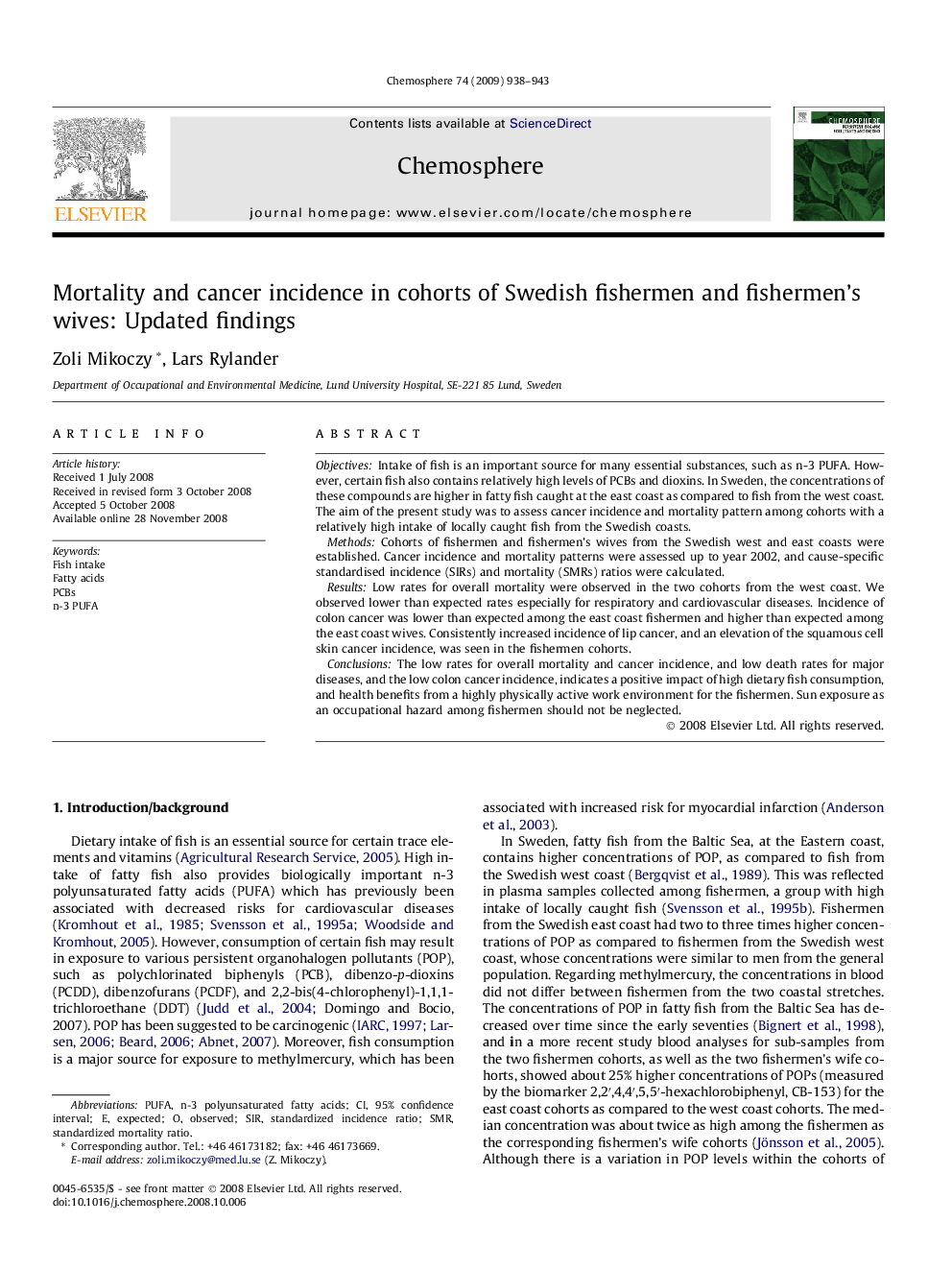| Article ID | Journal | Published Year | Pages | File Type |
|---|---|---|---|---|
| 4413507 | Chemosphere | 2009 | 6 Pages |
ObjectivesIntake of fish is an important source for many essential substances, such as n-3 PUFA. However, certain fish also contains relatively high levels of PCBs and dioxins. In Sweden, the concentrations of these compounds are higher in fatty fish caught at the east coast as compared to fish from the west coast. The aim of the present study was to assess cancer incidence and mortality pattern among cohorts with a relatively high intake of locally caught fish from the Swedish coasts.MethodsCohorts of fishermen and fishermen’s wives from the Swedish west and east coasts were established. Cancer incidence and mortality patterns were assessed up to year 2002, and cause-specific standardised incidence (SIRs) and mortality (SMRs) ratios were calculated.ResultsLow rates for overall mortality were observed in the two cohorts from the west coast. We observed lower than expected rates especially for respiratory and cardiovascular diseases. Incidence of colon cancer was lower than expected among the east coast fishermen and higher than expected among the east coast wives. Consistently increased incidence of lip cancer, and an elevation of the squamous cell skin cancer incidence, was seen in the fishermen cohorts.ConclusionsThe low rates for overall mortality and cancer incidence, and low death rates for major diseases, and the low colon cancer incidence, indicates a positive impact of high dietary fish consumption, and health benefits from a highly physically active work environment for the fishermen. Sun exposure as an occupational hazard among fishermen should not be neglected.
